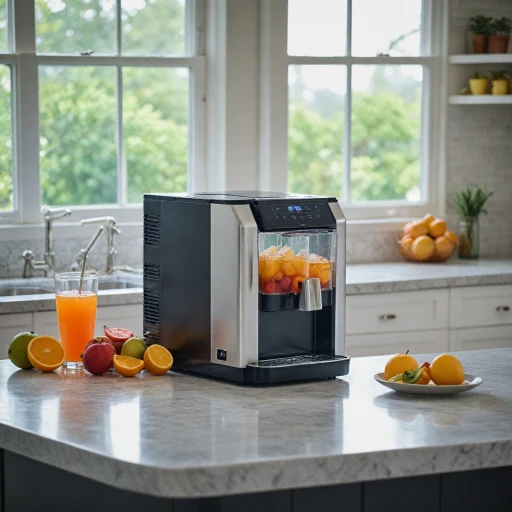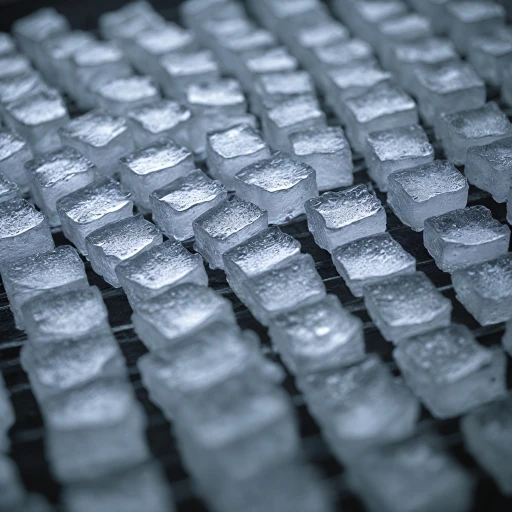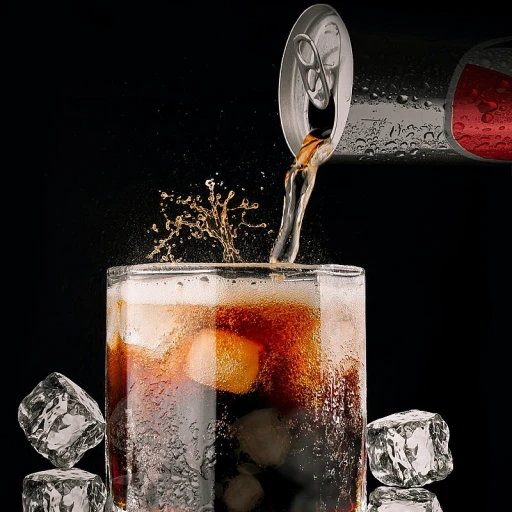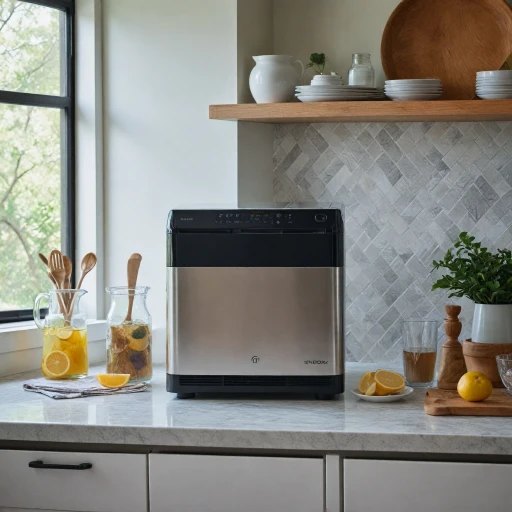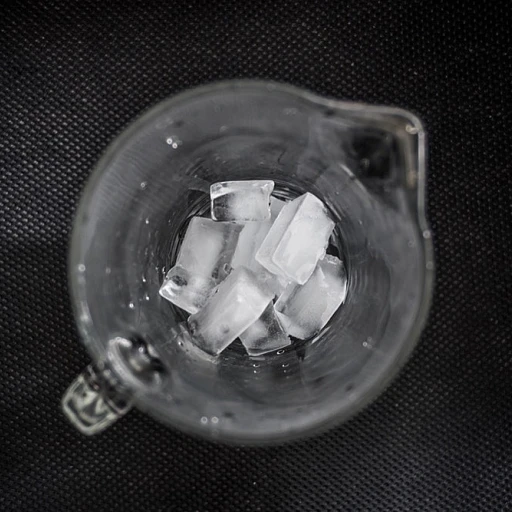Understanding Marine Ice Makers
The Basics of Marine Ice Makers
When it comes to seeking out marine ice makers, we must first understand how they differ from their regular counterparts. Designed specifically for use on boats and yachts, these products are built to withstand the unique challenges presented by the marine environment. The isotherm series by Indel Webasto, for example, delivers on performance and durability, with options for both air and water cooled systems. Marine ice makers, like the OCX Hydro series, provide low profile solutions ideal for the limited spaces on boats. These makers produce clear ice cubes, essential for both functionality and aesthetic appeal, while stainless steel constructions ensure longevity against corrosive salty air.
- Durability: Marine ice makers are constructed using materials such as stainless steel to combat rust and wear.
- Space Efficiency: Compact design caters to the constraints of marine environments.
- Power Efficiency: Efficient power consumption means these devices remain functional without draining power reserves.
Options abound from brands like Indel Webasto, featuring door styles from white to stainless steel, fitting seamlessly into any marine aesthetic. Factors such as energy efficiency, which will be discussed further, and installation considerations are pivotal in choosing the right ice maker for your boat, impacting both performance and convenience.
For more nuanced understanding, consider our experience with nugget ice makers, showcasing further insights into a range of ice making solutions.
Space and Installation Considerations
Key Considerations for Installation
When selecting a marine ice maker for your vessel, it's crucial to consider the available space and the installation process to ensure seamless integration. Small boats may have limited space, so it's essential to choose compact and low-profile options, such as the Isotherm clear ice makers or the OCX series. Additionally, consider whether a product is water or air-cooled, as each has specific installation requirements that might affect your decision.Ensuring Compatibility with Your Boat
Each boat is different, and ensuring your ice maker is compatible with your specific marine environment and the available space is vital. Look for models like the Indel Webasto marine ice makers, known for their flexibility and adaptability to various boat layouts. Consider the location of installation, as the door opening direction may affect accessibility, especially in confined spaces. Stainless steel products are typically preferred for their durability and resistance to corrosion in humid marine environments.Planning for Power Needs
Assess your boat’s power capabilities and the ice maker’s energy consumption to ensure compatibility. Some ice maker models, like the OCX hydro and Refill version models, offer different power consumption levels. It's important to plan for adequate power supply, considering both the marine environment and efficiency. For more extensive guidance on selecting an ice maker that suits your commercial outdoor activities, you can refer to our detailed blog post on choosing the best outdoor ice maker for commercial use.Energy Efficiency and Power Consumption
Power Consumption and Efficiency
When selecting a marine ice maker, considering energy efficiency and power consumption is crucial. These factors play a significant role, especially when you're on a boat with limited power resources. Choosing an energy-efficient system can help conserve your boat's energy supply, ensuring other essential systems continue to operate smoothly.
Some ice makers, like the 12-volt ice maker, are specifically designed to be energy efficient, making them ideal for marine use. These products often use less electricity while delivering consistent production, so you won’t have to worry about running out of ice while you’re out at sea.
Water and Air Cooling Options
Another aspect to consider is whether the ice maker is water-cooled or air-cooled. Both systems have their advantages, but it's essential to determine which fits your needs best. Water-cooled options can be more efficient in high-heat areas, though they may consume more water. Conversely, air-cooled makers require good ventilation but save on water usage and are often easier to maintain. Hence, evaluating your boat's setup will guide you in choosing the right one.
Understanding Ice Production Capacity
Marine ice makers vary significantly in their ice production capacities. It's important to ensure your chosen model aligns with your ice needs. Whether you prefer the sleek stainless steel that blends with your boat's decor or an indel webasto product designed for rugged marine environments, understanding the pounds of ice generated per day will help in making an informed decision. Consider models that offer low profile designs if space is a concern.
By focusing on energy efficiency and power consumption, you'll ensure that your marine ice maker is both economical and effective in its ice-making duties. Remember, the right features can enhance your marine experience, keeping your beverages chilled and your adventures more enjoyable.
Durability and Marine Environment Suitability
Built to Last in Marine Settings
When choosing a marine ice maker, it's crucial to consider its durability and suitability for the marine environment. The boat setting presents unique challenges that can impact the longevity and performance of these products.- Corrosion Resistance: Marine ice makers should be constructed with materials that withstand harsh conditions. Models featuring stainless steel for both the interior and exterior components are recommended due to their superior resistance to corrosion. Isotherm, Webasto Marine, and Indel Webasto are manufacturers known for producing high-quality stainless steel products ideal for the marine environment.
- Temperature Fluctuations: Marine conditions involve fluctuating temperatures, and your ice maker needs to perform consistently under such variations. A system like the OCX series, which offers strong performance in different water temperatures, will serve well on a boat.
- Impact of Saltwater: Exposure to saltwater can be particularly damaging to ice makers. Thus, it's vital to ensure these systems are air- or water-cooled in a way that minimizes saltwater impact. Water-cooled options are beneficial when ensuring optimal heat exchange.
- Stable and Secure Installation: Rough sea conditions can cause unstable movements that may impact the ice maker's functionality. Opt for low-profile models with sturdy installations to withstand the boat's motions without damage or performance compromise. Additionally, door latches should be secure to prevent accidental openings.
Maintenance and Cleaning Tips
Maintenance Practices for Lasting Performance
To ensure your marine ice maker operates efficiently and has a long lifespan, regular maintenance and proper cleaning are essential. Proper upkeep can prevent malfunctions and ensure consistent ice quality, like that of clear ice from certain models.
- Regular Cleaning: It’s important to clean the ice maker regularly to avoid any build-up that could impair performance. This includes removing ice build-up in the maker to keep the air systems from getting clogged.
- Using Appropriate Cleaners: Make sure to use the right cleaning agents that are suitable for stainless steel surfaces. This prevents corrosion and keeps the appearance pristine, particularly for stainless steel models.
- Water Filtration: Ensure the water used in the ice maker is filtered properly. This helps in maintaining the clarity of ice cubes and enhances the performance of water-cooled systems like the maker ocx series.
- Monitoring Components: Regularly check components such as the door seals, ice bins, and refill mechanisms. Any issues here can affect the efficiency of the ice production system.
- Professional Servicing: Engage professional servicing for comprehensive checks, especially for complex products like the indel webasto and isotherm makers. They are built to endure marine environments but still require expert handling.
By keeping up with these maintenance practices, your marine ice maker can provide you with a reliable supply of ice, whether you're on a webasto marine boat or any other vessel equipped with such advanced ice-making technology.
Top Features to Look For
Must-Have Features in a Marine Ice Maker
Choosing the right marine ice maker for your needs involves paying attention to specific features that enhance functionality and convenience. Here's a look at the key attributes to consider:
- Material and Build: Opt for ice makers crafted from stainless steel for better resistance to the harsh marine environment. This material is durable and less prone to rust, ensuring longevity.
- Cooling System: Decide between air-cooled and water-cooled systems. Air-cooled systems are simpler but may not perform as efficiently in hotter climates. Meanwhile, water-cooled systems, like the indel webasto models, can be more efficient, especially on larger vessels.
- Ice Type: Consider whether you need clear ice cubes or white ice. Clear ice, as provided by the ocx hydro or ocx series, is typically preferred for beverages as it melts slower.
- Ice Output: Assess the amount of ice your boat might require. If you need a significant amount, check the lbs ice production capability of the maker.
- Low Profile Design: A low profile design can be crucial for boats with limited space, complementing the space and installation considerations discussed earlier.
- Flexible Installation: Ensure the marine ice maker fits well within your vessel's layout, with the option of front door or top access, depending on your setup.
- Efficient Power Use: Prioritize models that offer efficient power consumption. Many products are designed with energy-saving features that align with the energy efficiency needs discussed earlier.
- Brand Experience: Established brands like isotherm and webasto often guarantee reliability. Look for models like the maker isotherm or webasto marine that are popular in marine settings.
By focusing on these features, you'll ensure that your chosen product meets functional needs while withstanding marine conditions effectively.
-logo-retina.jpg)

